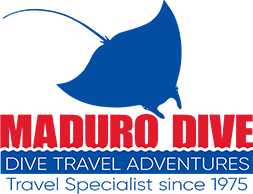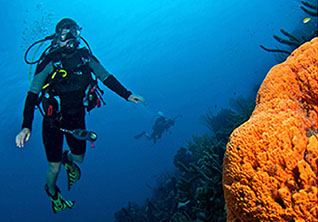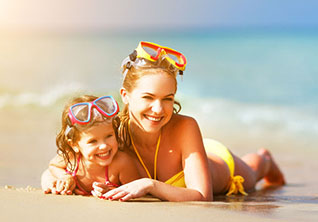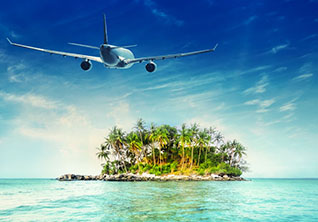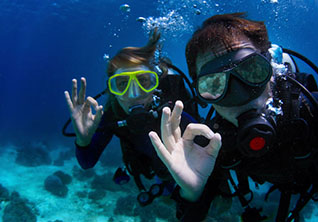St. Vincent & The Grenadines are a scuba diving destination in the Caribbean. The islands are 24 miles south of St. Lucia and 75 miles north of Grenada. 32 islands form the country and some are privately owned. The islands were formed by volcanic activity. Saint Vincent is the largest of the islands at 18 miles long and 11 miles wide. Moreover, it is home to Mt. Soufriere which rises 4,049ft above sea level and was last active in 1979. Fortunately, due to modern advanced warnings there were no casualties during the last eruption. Now we aren't experts, but according to our math, the volcano shouldn't become active again until sometime between 2056- 2120. As far as past history goes, Columbus named this island in 1498 much to the surprise of the indigenous native population.
By 1511 when the slave expeditions were given Spanish royal sanction, escaped and shipwrecked slaves from African known as "Garifuna" joined forces with the local natives. Together, they successfully kept the Spanish from taking over and decimating the local population as they had done on all the other surrounding islands. The French were the First Europeans to control St. Vincent followed by the British, then the French, and then the British again. In 1979 St. Vincent & The Grenadines became independent from the British. Enjoy our blog article:
Scuba Diving Specialties: What is MUCK Diving?
Diving St. Vincent & The Grenadines
There are 67 scuba diving sites to visit here. Most of the beaches on St. Vincent have black sand and most of the beaches in the Grenadines have white sand. Because of the multitude of islands, there is almost a niche for every sea creature in the Caribbean and Atlantic Ocean. St. Vincent & The Grenadines are called the critter capital of the Caribbean. From shrimps, flamingo tongue cowries, to dwarf frog fish, they have them all. Flying gunards, peacock flounder, lizardfish, and garden eels love the sandy area, and pelagics love the walls. So, one of the most popular scuba diving sites is
The Cave. Here you enter a cave where bats are sequestered above and come out between a fissure to the reef.
Two locations near Fort Charlotte are
The Steps to view a red lipped batfish and
Bottle Reef to view rum bottles tossed from the 1806 completed fort. Anchor reef has swim throughs,
New Guinea Reef at 100ft has black coral, and
Tobago Cays is home to green sea turtles. If you want to discover a deserted island surrounded by sharks, then
Mopion Reef will not disappoint you. Moreover,
Bequia has a variety of sea life from sharks to seahorses. Drift diving around the coral is all the rage at
Mustique. Now, for some dive sites the name says it all:
The Wall, The Pinnacle, The Garden, and
The Forest. For wreck divers there is
The Capital Wrecks; a group of 3 and
Mayreau Gardens with the 1918 British gunship called the
Puruni.
Accommodations. Attractions, Activities
St. Vincent & The Grenadines have a variety of resorts, hotels, inns, as well as private island rentals. You may wish to visit the Bequia Maritime Museum or the St. Botanical garden. Above all, from 600ft up at Fort Charlotte you get a sweeping view and the Vermont Nature Trail is nearby. Besides scuba diving, you can go snorkeling in the Tabago Cays Marine Park. You might also like to take a guided tour up La Soufriere in search of the endemic Saint Vincent Parrot. You can also tour the Dark View water falls or the Walliabou Heritage Park. Finally, did we mention that you can see the movie set/beach of
The Pirates of the Caribbean movie: Curse of the Black Pearl?
